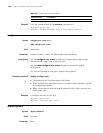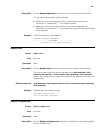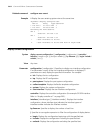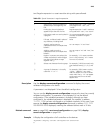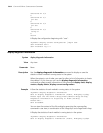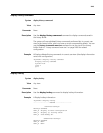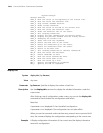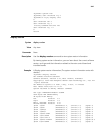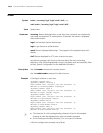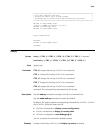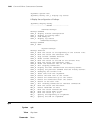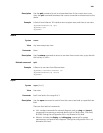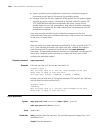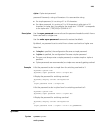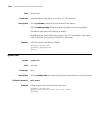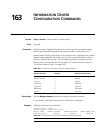
2418 CHAPTER 162: BASIC CONFIGURATION COMMANDS
header
Syntax header { incoming | legal | login | motd | shell } text
undo header { incoming | legal | login | motd | shell }
View System view
Parameter incoming: Banner displayed when a user logs onto a terminal user interface by
user name and password. If authentication is required, the banner is displayed
after authentication.
legal: Authorization banner before login.
login: Login banner at authentication.
motd: Banner displayed before login. The support for the keyword varies with
devices.
shell: Banner displayed for VTY users to enter user view.
text: Banner message, with the first character being the start and ending
delimiters. After the ending delimiter is input, the system quits automatically. Refer
to Basic System Configuration for the detailed information.
Description Use the
header command to create a banner.
Use the undo header command to clear a banner.
Example # Configure a banner in user view.
<Sysname> system-view
[Sysname] header incoming %
Input banner text, and quit with the character ’%’.
Welcome to incoming(header incoming)%
[Sysname] header legal %
Input banner text, and quit with the character ’%’.
Welcome to legal (header legal)%
[Sysname] header login %
Input banner text, and quit with the character ’%’.
Welcome to login(header login)%
[Sysname] header motd %
Input banner text, and quit with the character ’%’.
Welcome to motd(header motd)%
[Sysname] header shell %
Input banner text, and quit with the character ’%’.
Welcome to shell(header shell)%
n
■ The character % is the starting/ending character of text in this example.
Entering % after the displayed text quits the header command.
■ As the starting and ending character, % is not a part of a banner.
# Test the configuration remotely using Telnet.



